1 Indian Mythologies
Vedas and ancient Indian science theories are often considered as the most advanced works in the world from their era. There are scientists talking who are fascinated by the knowledge of the ancient Indian scholars and dedicated their lives researching on the ancient Indian Science.
Can we think of Indian science and its mythologies, and when we do what do we get? If we look at today’s science closely we’ll witness some connections between them one way or another. Earlier, Firstpost had once reported that organizers of the science symposium were planning to slip Vedic mythology about aviation in their program. The Indian Science Congress, which hosts Nobel laureates, discusses topics like ribosome’s, resistance to antibiotics and the origin of life, and discourses on controlling the cell cycle among other things. One of the speakers, Captain Anand J Bodas, had told Mumbai Mirror in one report that the aero plane was a vehicle discovered in the Vedic age which could not just move from one country to another, but also from one planet to another. “In those days aero planes were huge in size, and could move left, right, as well as backwards, unlike modern planes which only fly forward,” he had said. Citing an ancient Indian treatise on aviation, the Vaimanika Prakaranam as his source text and in an even more bizarre twist for the unbelieving — he said most of its principles have been forgotten because of the passage of time, foreign rulers and things being stolen from the country. The fact that such a prestigious platform was used for “pseudo-science” discussion is appalling.
2.Creation of universe according to Vedic structure.
The structure of universe and its entire physics has been described in detail in many Hindu scriptures like Srimad Bhagavatam and Vedas dating back to thousands of years still not precisely traceable to historians. According to Srimad Bhagavatam, the total life of the universe is 100 universal days and 100 universal nights where each universal day/night lasts for 4,320,000,000 (four billion three hundred twenty million) earth years. Thus, there are two types of recreation are described 1: Partial recreation 2: Total recreation.
After each universal day, partial dissolution takes place which starts a universal night after this universal night is over partial recreation occurs starting another universal day and so on. Total destruction of the universe takes place after 100 universal nights and days in which all planetary systems collapse. Planetary systems, According to Vedic cosmology, there are 14 planetary levels in our universe which in descending order are:
- Satyaloka
- Tapaloka
- Janakloka
- Maharloka.
- Svarlok
- Bhuvarloka
- Bhurloka
- Atala
- vitala
- Sutala
- Talatala
- Mahatala
- Rasatala
- Patala
Srimad Bhagvatam tells that the Earth is located into seven subdivisions. From a vast distance, the Bhumandala planetary system looks like a disk.
Below the 14 planetary levels, a planet called Pitriloka is located and below the pitriloka planet is the Narakloka planetary system (Hell) which has further 27 subdivisions containing hundreds of thousands of planets more. It is stated that the consciousness level of the souls that are sent to the Narakloka has shrunk to extreme low levels.
3. The Sun and its Orbit.
Bhagvatam allows us to calculate the exact age of sun and its life span. The manifested 155,521,960,853,098(one hundred and fifty-five trillion, five hundred and twenty-one billion, nine hundred and sixty million, eight hundred and fifty-three thousand and ninety-eight) years ago (taking 1990 as the present year) and will dissolute after 155,518,039,146,902 (one hundred and fifty-five trillion, five hundred and eighteen billion, thirty-nine million, one hundred and fourty-six thousand, nine hundred and two) years from now.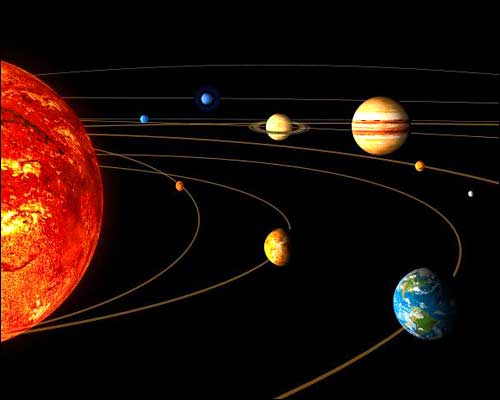
Picture credit: Google Images
During its first life span, partial dissolutions take place periodically at which it cools down and its light diminishes. The last partial dissolution occurred 6,280,853,166,902 (six trillion, two hundred and eighty billion, eight hundred and fifty-three million, one hundred and sixty-six thousand, nine hundred and two) years from now.
Evidence of this calculation can be found in
Bhagvatam 5.21.8-9: people living in countries at points diametrically opposite to where the sun is first seen rising, will see sun setting and if a straight line were drawn from the point where the sun is at midway, then people in countries at the opposite end of the line would be expecting midnight and vice-versa.
This tells that the spherical nature of planets were known hundreds of years back before people like Thales, Aristotle proposed the flat structure of earth.
Bhagvatam 5.21.19: In its orbit through bhumandala the sun traverses a distance of 95,100,100 Yojanas (ancient Indian measurement unit) at the speed of 2000 Yojanans and two Krosas in a moment.
When converted, the traversing distance becomes 760,800,000 (seven hundred sixty million eight hundred thousand) miles and the speed of completion of one revolution comes out to be 16,004 miles per second which is very close to modern scientific calculations.
4. The Moon and its Orbit
The Surya sidhanta or the book on Vedic cosmology informs that the diameter of the moon is equal to 2,400 miles and the circumstances of its orbit is equal to 1,620,000 (One million six hundred twenty thousand) miles.
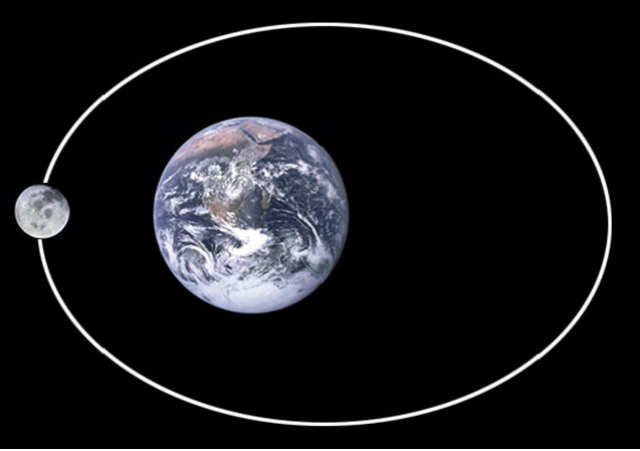 Picture credit: Google Images
Picture credit: Google Images
Bhagvatam 5.22.8: Moon travels at a speed faster than that of the sun. In two lunar fortnights the moon travels through the equivalent of a year of the sun, in two and a quarter days it passes through a month of the sun, and in one day it passes through a fortnight of the sun. So questions arises when we get the exact same calculations from today’s science.
They even knew the existence of our solar system which is written in
Rig Veda 1.35.9
“The sun moves in its own orbit but holding earth and other heavenly bodies in a manner that they do not collide with each other through force of attraction”
If they have written about the existence of solar system, they must have witnessed or studied it before and if not then how were they able to measure the circumference of the planet Earth because Brahmagupta in the 7th century CE proposed that the circumference of the Earth to be 36,000 km, which is close to the actual figure of 40,075 km, with an error margin of 1%
5. Space Time Theory
Vedic physics states that time is a subtle energy or force which is manifested before the cosmic manifestation. Time moves the unmanifest material energy and controls the movements in the universe, without the manifestation of time, the unmanifest material energy cannot become active and take form, and only after the time fluctuations agitate the unmanifested material energy does the cosmic manifestation begin!
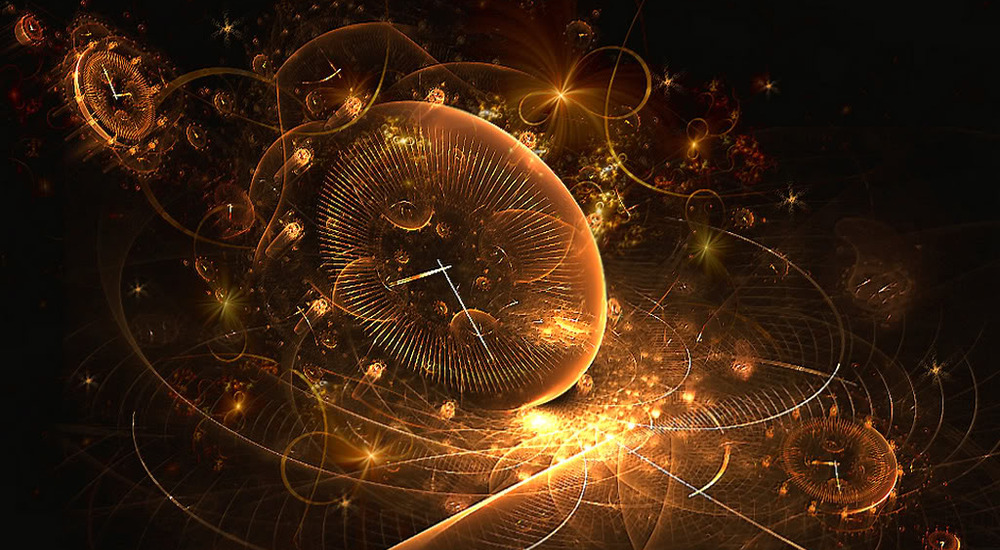 Picture credit: Google Images
Picture credit: Google Images
Bhagvatam: 3.11.4: elementary time is measured according to its covering of a particular elementary space that time which covers the unmanifest aggregate of the elementary particles is called the great time.
The space time web structure is clearly evident from the above statement pointing out to be existence of 4 dimensional Euclidean geometry.
Although the discovery of Earth being round is credited to Greek astronomers. Interestingly, Indian astronomers had already claimed that Sun is a star and that earth is spherical long before the Greeks. It is documented that various attempts had been made to measure the circumference of earth during the Vedic periods. Aryabhatta deduced a formulation which proves that the Earth is rotating on an axis. By estimating the value of pi to be 3.1416 he deduced the circumference of earth to be 39736 Kilometers which is only 100 kilometers below its true value.
In fact, in his book Aryabhatiya, he also asserts that the movement of heavenly bodies like the sun, the stars are all relative, and only earth is moving.
“Just as a passenger in a boat moving downstream sees the stationary (trees on the river banks) as traversing upstream, so does an observer on earth see the fixed stars as moving towards the west at exactly the same speed (at which the earth moves from west to east.”
6. Biological evolution
Vedic evolutionary theory differs from the Darwinian in that the common ancestor is a super intelligent humanoid, not a single celled bacterium, in addition all species evolve from a complex form to the simple structure and not vice versa, geneses of complex species contain all the necessary genetic information to build genes of simpler species, in addition , Vedas describe another type of evolutionary process; that of consciousness!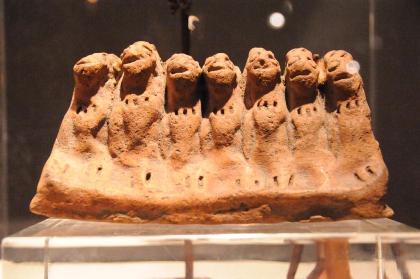 Picture credit: Google Images
Picture credit: Google Images
The units of consciousness within the bodies of all species areindestructible. These individual units are qualitatively identical with each other, yet display a certain range of powers and abilities based upon the particular characteristics of the physical form they inhabit. During the evolutionary process the imperishable conscious units transmigrate from lower to higher species for eg. Ape to man thus Vedic literatures describe the evolutionary of forms descend from higher to lower and the evolution of consciousness ascend from lower to higher.
Organ Transplant in Vedic Age
We know that there are two types of replacement of body parts: First there are parts like hands, arms, and legs, which are not vital organs. Then there are the transplants of vital organs. The one instance where one can conceive of a combination of the two is transplanting the entire head, which is both an external appendage and the storehouse of the most important organ in the body, namely the brain. Thus, head replacement would be the most sophisticated organ transplant one can Imagine.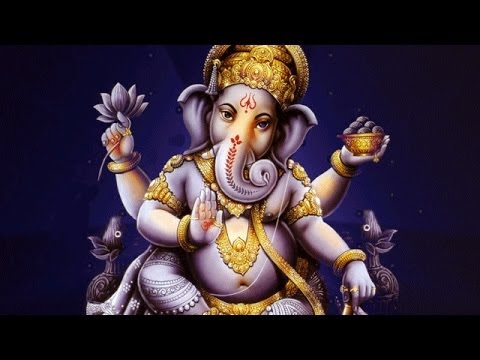 Picture credit: Google Images
Picture credit: Google Images
We find an instance of this in the story of Ganesha. There are several accounts of how Ganesha received his head. According to one, Shani was among the guests at Ganesha’s birth. When Shani looked directly at the child, the baby’s head turned to ash. Parvati began to wail. When this happened, Vishnu, flew off in search of a substitute head. He found on the bank of a river a sleeping elephant. He severed the beast’s head and affixed it on to the body of Ganesha. Which is again a story about a science “Organ transplant.”
7. Nature of Matter
Bhagvatam states that matter exists in two conditions
1 manifest condition
2 unmanifest condition
When matter is transformed to a manifest condition, the universe is created and when the universe is annihilated, matter is transformed into its unmanifest condition.
According to the second law of thermodynamics, the entropy of an isolated system always increases. The entropy is a physical quantity, which measures the degree of disorder of a system; it is a common experience that entropy of a system must always increase if a system is left alone.
One can create order out of disorder, but that requires expenditure of effort or energy and so decrease the amount or energy available. Thus, for matter to be ordered requires a conscious being! Without a conscious being behind matter, matter’s only tendency is to increase disorder. This tendency of the universe to expand comes from the conscious being that activates matter by injecting consciousness into it.
Life-principle from the stars: Akash Ganga
In Hindu lore there is an interesting account of how the sacred river Ganga which has its origins in the Himalayan range, actually arose. In Ramayana it is stated that the river “rose from the skies and finally came down to earth in the form of a terrestrial stream that has the power to rid us of worldly sins.” In this vision, the river’s pristine presence in the universe may still be seen as the Milky which is known as Akash Ganga or the Celestial Ganga.
Picture credit: Google Images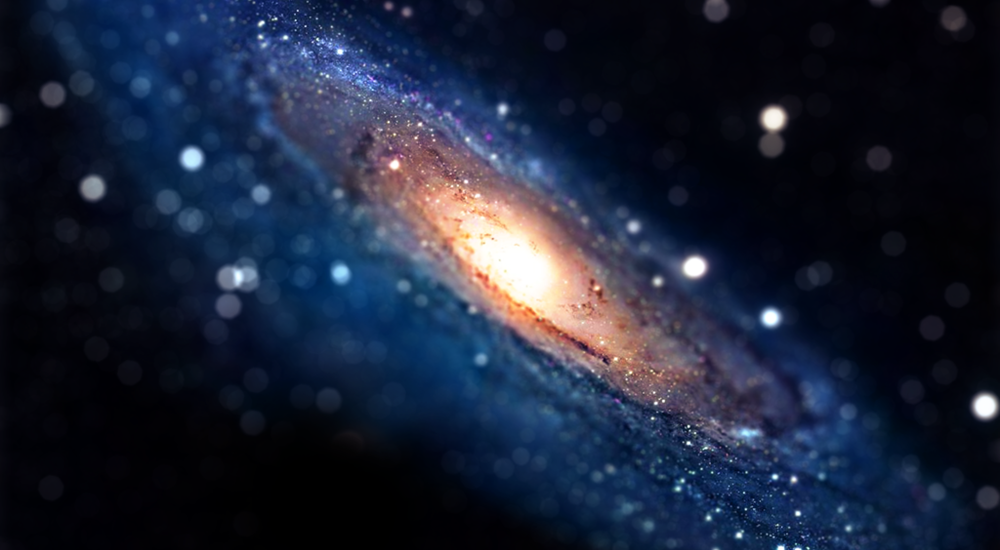
We note that this is perhaps the first instance in history where one put forward the idea of a material something reaching us from the stellar world. The extra-terrestrial origin of meteors was not discovered until the eighteenth century. And it was only in the twentieth century that we became aware of the ceaseless shower of cosmic rays which reach us from the sun primarily, but also from beyond our solar system.
8. The Measurement and Calculations
Bhagvatam 3.11.5-6: the division of gross time is calculated as follows two elementary particles make one double particle, and three double particles make one hexa particle. The time duration needed for the integration of three hexa particles is called a Truti, and one hundred Trutis make one Vedha, Three Vedhas make one lava, it is calculated that if a second is divided into 1687.5 parts, each part is the duration of one Truti, which is the time needed for the integration of eighteen elementary particles
The duration of three lavas is equal to one Nimesa, the combination of three Nimesas make one Kasana, five Kasanas together combined make one Kastha, and fifteen Kasthas make one Laghu.
Bhagavatam 3.11.8: Two Laghus is equal to two minutes fifteen Laghus make one Nadika, which is also called a Danda two Dandas make one Muhurta, and six Dandas make one fourth of a day or night.
Bhagvatam 3.11.10: It is calculated that there are four Praharas, which are also called Yamas, in the day and four in the night of the human being. Similarly, fifteen nights are a fortnight, and there are two fortnights in a month.
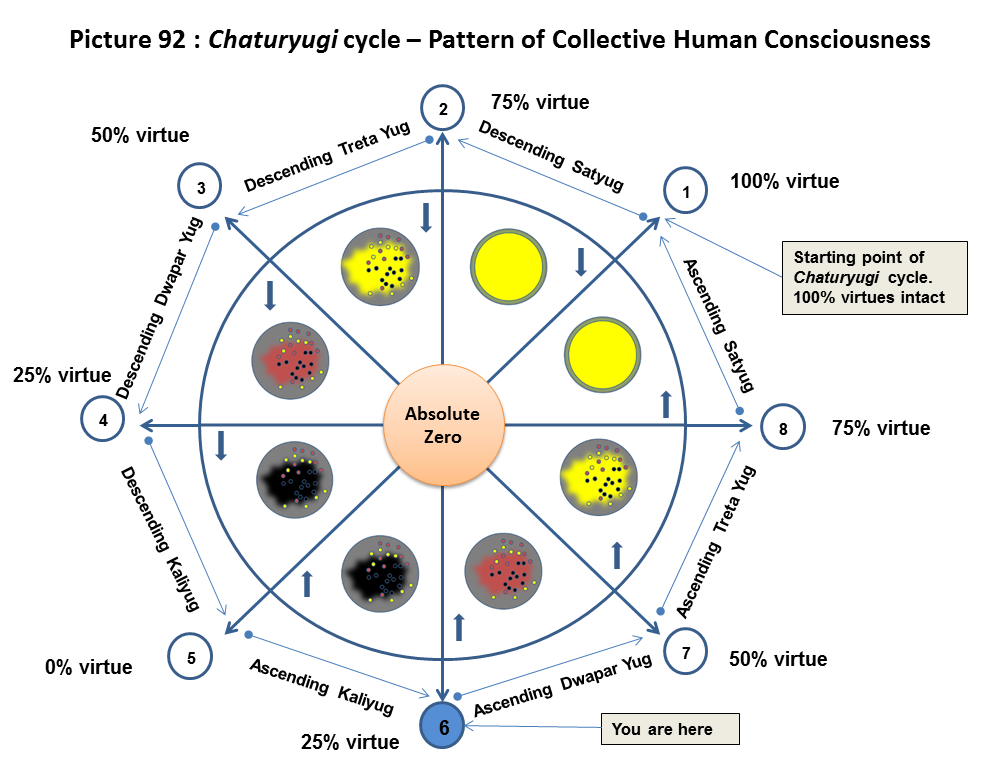
Picture credit: Google Images
Bhagvatam 3.11.11- the aggregate of two fortnights is one month. The duration of life of a human being is said to be 100 earth years. One day and night on Satyaloka planetary system is equal to 8,640,00 years on earth
Bhagvatam 3.11.8 : The universe exists in time cycles four time periods during each cycle of the universe are
1 Satya yuga
2 Treta yuga
3 Dvapara yuga
4 Kali yuga.
Bhagvatam 3.11.19 The duration of these periods is given in terms of years of Devas( inhabitants of higher planetary systems) one year of Devas is equal to 360 years of human beings.
Durations are as follows
1 satya yuga 4800 x 360 = 1,720,000 earth years
2 Treta Yuga 3600 x 360 = 1,296,000 earth years
3 Dvapara yuga 2400 x 360 = 864,000 earth years
4 Kali yuga 1200 x 360= 432,000 earth years
We are currently living in the first half of Kali yuga.
9.Dimesnsions of Universe
According to physics space inside our universe is multidimensional, there are 64 main dimensions and each dimension is further divided into many sub- dimensions. Since the inhabitants of earth can perceive three dimensions, their senses have no access to many other realms of universal reality!
It is said that through the ancient process of yoga (Especially Kriya yoga), one can obtain access to many other dimensions. When a yogi obtains access to other dimensions, he can perform unusual activities!
A yogi can achieve 8 mystical perfections, each perfections gives him access to 8 additional dimensions thus by achieving all eight perfections a yogi obtains access to all the 64 ( 8*8) dimensions making his body unaffected by space time bound physical laws!
Teleportation
Consider the story of Usha and Chitralekha, which appears in “Srimad Bhagavatam.” The beautiful Princess Usha, single and longing for love, had the experience of a handsome youth in her dream one night. The dream was interrupted, and she woke up and exclaimed, “Oh, beloved one, where are you?” She confided the dream to her close friend Chitralekha. Chitralekha said she would find who the young man was and get him to her. But how was she to recognize him?
Chitralekha began to draw a series of faces, and asked Usha if any of them resembled the man of her dream. Usha came upon a drawing which was of Aniruddha, a grandson of Lord Krishna. That night, Chitralekha transported herself to Dwaraka where she found Aniruddha. Two aspects of today’s world are implicit in this story. First there is the idea that one can identify an unknown person through sketches, a matter that is routinely done in criminal investigations. Then, of course, there is the notion of teleportation.
Time Travel
If we look into ancient texts we can find a number of references to time travelling. In Hindu mythology, there is the story of King Raivata Kakudmi who travels to meet the creator Brahma. Even if this trip didn’t last long, when Kakudmi returned back to Earth, 108 yugas had passed on Earth, and it is thought that each yuga represents about 4 million years. The explanation Brahma gave to Kakudmi is that time runs differently in different planes of existence.
Similarly, we have references in the Quran about the cave of Al-Kahf. The story refers to a group of young Christian people, who in 250 AD tried to escape persecution and retreated, under God’s guidance, to a cave where God put them to sleep. They woke up 309 years later. This story coincides with the Christian story of the seven sleepers, with a few differences.
10.Foundars of Mathematics
Aryabhata worked on the approximation of value of pi () and came to the conclusion thatis irrational and is approximately 3.1416 in 499 CE when he was 23 years old.
He can be considered as one of the smartest brains of ancient India because the irrationality of pi was proved in Europe only in 1761 by Lambert.
Not to mention, he even derived the values of sine & cos and gave birth to the concept of trigonometry.
Mantras from the early Vedic period (before 1000 BCE) invoke powers of ten from a hundred all the way up to a trillion, and provide evidence of the use of arithmetic operations such as addition, subtraction, multiplication, fractions, squares, cubes and roots. A 4th Century CE Sanskrit text reports Buddha enumerating numbers up to 1053, as well as describing six more numbering systems over and above these, leading to a number equivalent to 10421. Given that there are an estimated 1080 atoms in the whole universe, this is as close to infinity as any in the ancient world came. It also describes a series of iterations in decreasing size, in order to demonstrate the size of an atom, which comes remarkably close to the actual size of a carbon atom (about 70 trillionths of a meter).
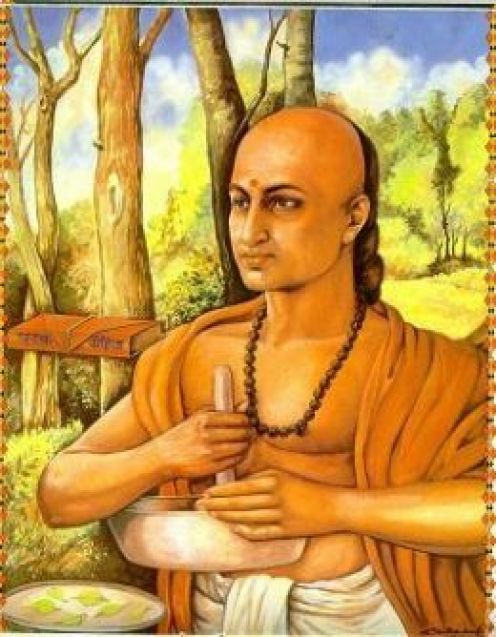
Aryabhatta.
Picture credit: Google Images
As early as the 8th Century BCE, long before pythagoras, a text known as the “Sulba Sutras” (or “Sulva Sutras”) listed several simple Pythagorean triples, as well as a statement of the simplified Pythagorean theorem for the sides of a square and for a rectangle (indeed, it seems quite likely that pythagoras learned his basic geometry from the “Sulba Sutras”). The Sutras also contain geometric solutions of linear and quadratic equations in a single unknown, and give a remarkably accurate figure for the square root of 2, obtained by adding 1 + 1⁄3 + 1⁄(3 x 4) – 1⁄(3 x 4 x 34), which yields a value of 1.4142156, correct to 5 decimal places.
As early as the 3rd or 2nd Century BCE, Jain mathematicians recognized five different types of infinities: infinite in one direction, in two directions, in area, infinite everywhere and perpetually infinite. Ancient Buddhist literature also demonstrates a prescient awareness of indeterminate and infinite numbers, with numbers deemed to be of three types: countable, uncountable and infinite.
Reference: Speaking tree.com, Video by Shikher verma, southreport.com


Nice blog, but sometimes i can’t understand why do Indians connect everything with their ancestors?
LikeLike